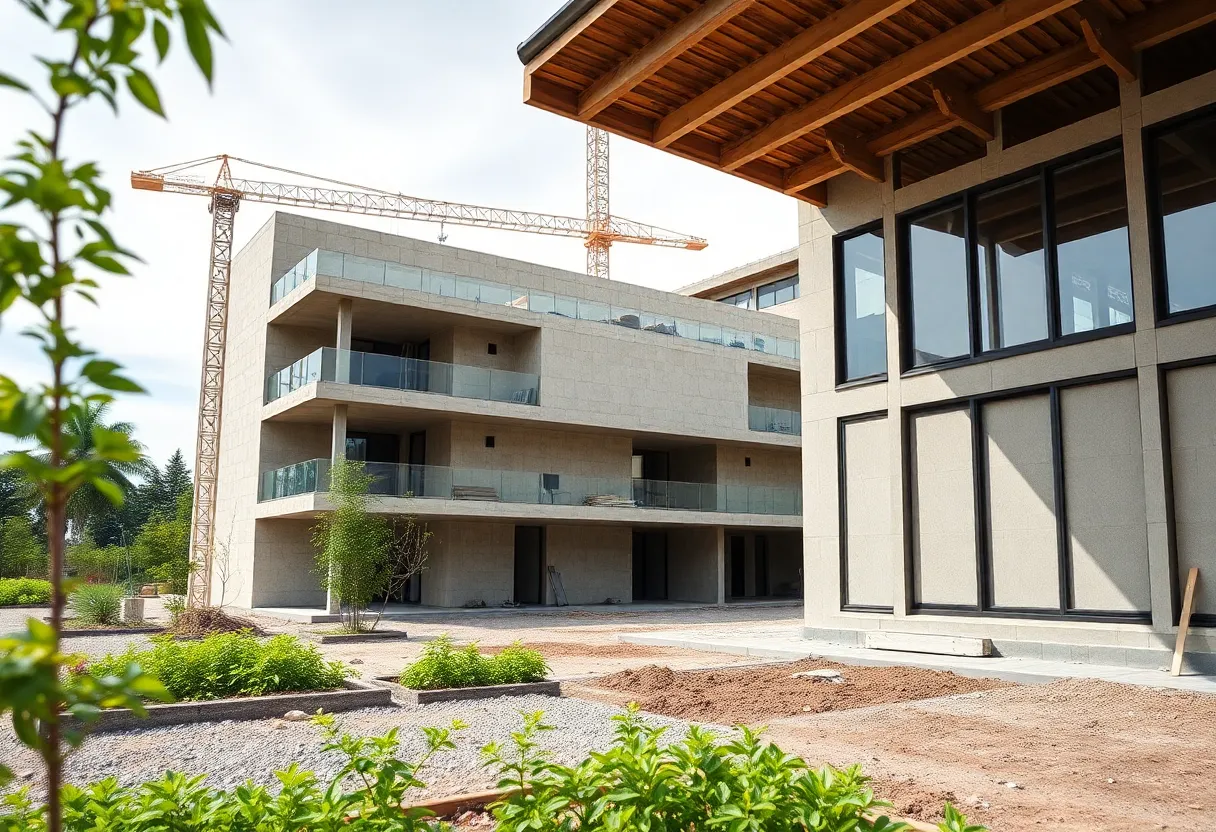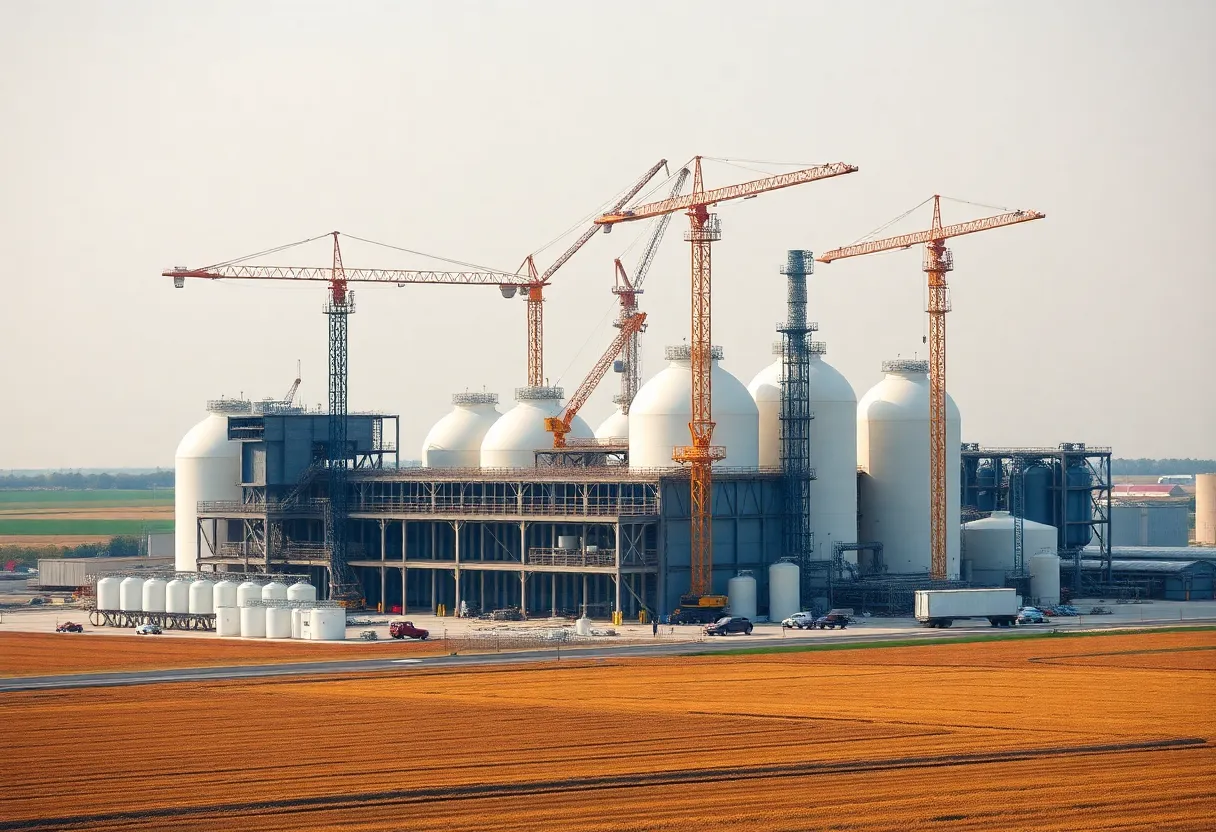South Korea, August 21, 2025
News Summary
A team of South Korean designers has introduced Re:shell, a biodegradable building material made from discarded eggshells. This material aims to address the significant construction waste problem in South Korea, which generates about 45% of the country’s total waste. By utilizing calcium carbonate from eggshells, Re:shell not only provides strength and durability but also decomposes naturally in soil, presenting an eco-friendly alternative to conventional materials. Future applications may include structural components and enhanced water resistance, aligning with sustainable building practices.
Re:shell: Biodegradable Building Blocks Made from Discarded Eggshells Aim to Cut Construction Waste
A team of designers at a university living design lab has created Re:shell, a biodegradable building material made primarily from discarded eggshells. The product is formed as a set of modular, interlocking, brick-like elements intended to replace or supplement conventional materials and to help tackle a national construction waste problem that makes up roughly 45% of total waste.
What the material is and why it matters
Re:shell turns a common food byproduct into a construction material. Eggshells are rich in calcium carbonate (CaCO₃), which provides binding and hardening qualities similar to those found in some cement mixes. The process converts discarded shells into a powder that is mixed with natural additives to create solid, interlocking units that can be used for partitions, facades and a growing set of prototype applications.
Design and production process
The production sequence is straightforward: collection of eggshells from local bakeries and restaurants, followed by washing, drying and grinding into a fine powder. That base powder is combined with tested natural additives such as red clay for durability, wheat bran for surface texture, and straw for flexibility and reduced weight. The mix is then molded into modular, interlocking units that click together like bricks.
Performance and environmental claims
Early strength tests show high hardness for Re:shell units, and the material has been designed to break down naturally when buried, leaving zero residual waste. The design team is working to add water-resistant properties while preserving full biodegradability, a key challenge if the material is to be widely deployed outdoors or in damp conditions.
Context and motivation
The project was conceived as a response to the environmental impacts of rapid industrialization and urban growth beginning in the 1970s and 1980s. With construction and demolition waste accounting for a large portion of refuse, designers looked for ways to reuse organic byproducts and rethink material lifecycles in architecture. The team frames the work within a design philosophy of balance between natural systems and human needs, drawing inspiration from traditional architecture.
Applications and prototypes
Prototypes range from small products and components to full-scale elements for interiors and exteriors, including interior partitions and exterior facades. The modular geometry is intended to simplify assembly and disassembly, supporting reuse and eventual return to the soil. Future research will explore whether the material can be scaled and engineered for structural roles, expanding its use beyond non-load-bearing applications.
Collection and scalability
The team selected eggshells because they are widely available and simple to collect from food businesses. Using existing local waste streams reduces transportation and procurement impacts. Scaling will require steady sourcing, quality control of organic inputs, and refinement of additives and production techniques to ensure consistent performance.
Next steps and challenges
Key efforts going forward include improving moisture resistance without adding synthetic, non-biodegradable agents, validating long-term durability under a range of weather conditions, and testing assembly methods for larger structures. If these hurdles are cleared, the material could offer a low-impact alternative for some building uses and a way to turn organic waste into temporary, useful architecture.
Frequently Asked Questions
What is Re:shell?
Re:shell is a biodegradable building material made mainly from ground eggshells combined with natural additives, formed into modular, interlocking brick-like elements.
Why use eggshells?
Eggshells are abundant local waste with a high calcium carbonate content, which helps provide binding and hardening properties similar to cement when processed into powder.
What additives are used?
Tested additives include red clay for durability, wheat bran for texture, and straw for flexibility and lighter weight. The team continues to test combinations to balance durability and biodegradability.
Is the material biodegradable?
Yes. Re:shell is designed to decompose naturally when returned to soil, aiming for zero residual waste while retaining useful life during use.
Can Re:shell be used structurally?
Current work focuses on non-structural uses like partitions and facades. Future research aims to determine whether the material can meet structural safety and load-bearing standards.
How will water resistance be handled?
Developers are exploring natural, biodegradable ways to increase water resistance so the material can be used outdoors without losing its compostable advantage.
Key features at a glance
| Feature | Details |
|---|---|
| Core material | Ground eggshells (high in calcium carbonate) |
| Form | Modular, interlocking brick-like elements |
| Waste target | Construction waste reduction; leverages food-service eggshell streams |
| Additives tested | Red clay, wheat bran, straw |
| Key properties | High hardness in tests, biodegradable, modular assembly |
| Biodegradability | Designed to decompose naturally in soil with no residue |
| Planned improvements | Water resistance, scalability, potential structural applications |
| Origin | Developed by a university living design lab within a department of design |
Deeper Dive: News & Info About This Topic
Additional Resources
- Designboom: Re:shell Biodegradable Building Material
- Advanced Science News: Biodegradable Bioplastics
- Laotian Times: ESG-focused Upcycling and Eco-friendly Collaboration
- Nature: Research on Biodegradable Materials
- Korea Herald: News on Sustainable Building Materials





